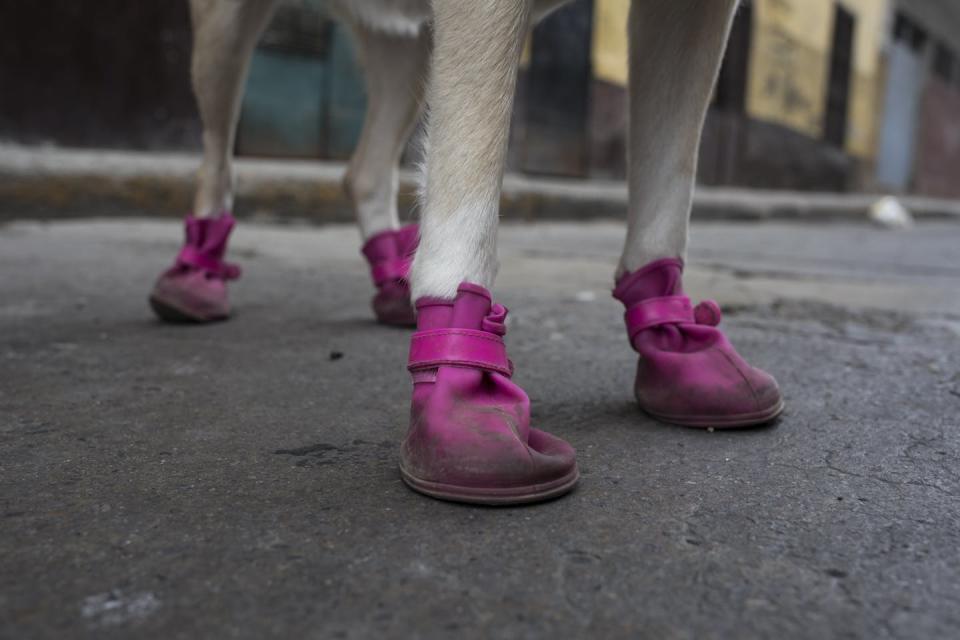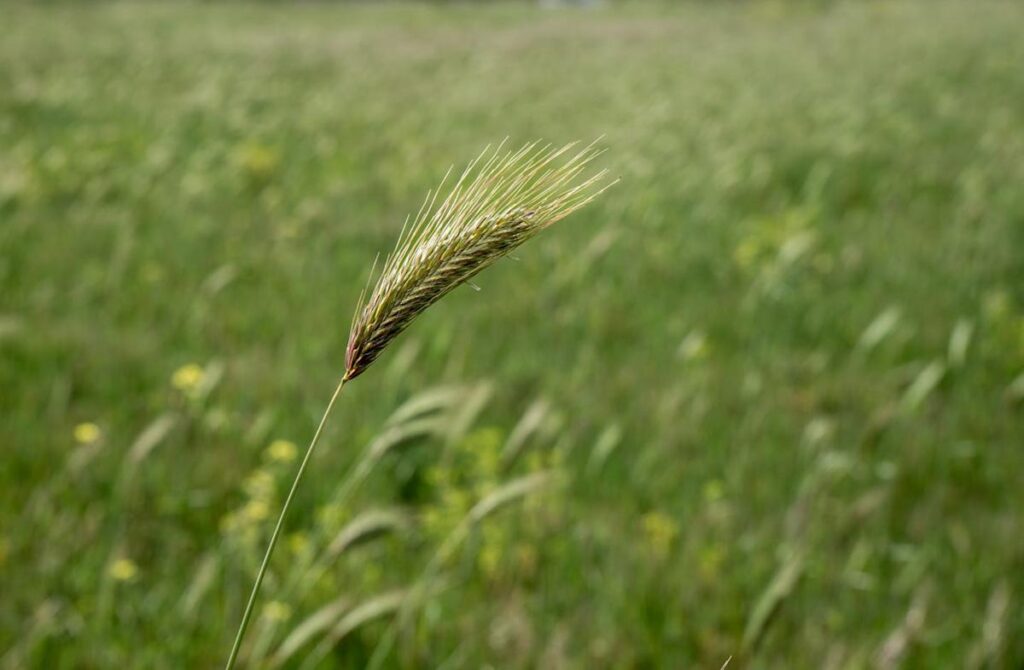Across much of the United States, spring is in full force. With warmer weather, people are taking their furry family members out on longer walks and spending more time outside. Alongside blooming flowers and trees, your pet might run into a small, unassuming grass seed pod known as a foxtail. Despite the cute name, foxtails can pose a major threat to your pet’s health.
I am a veterinarian in California’s Central Valley, and foxtails are a daily issue where I work, especially during the spring and summer months.
What exactly are foxtails?
A foxtail isn’t a specific plant. It is a type of grass seed pod that resembles a fox’s tail. Multiple species of grass can create this type of seed pod, and foxtails are found across much of the United States. Regions of the western U.S., especially California, have the most foxtails.
The outside of the foxtail is covered in small sticky hairs designed to stick to things. You can feel them yourself if you pull a foxtail off a plant. Rub your fingers against the seed one way, and then the other, and you’ll feel that one direction is smooth and the other direction is sticky.
Foxtails aren’t a big deal for people, as we don’t have a lot of hair and tend to remove things that are itchy or painful, but it’s a different story for pets.
A segment of the foxtail pod sticks to an animal’s fur, where it’s carried around until it eventually drops off and grows into grass. This sticky feature is great for the grass, as it helps spread the seeds around, but it also results in foxtail segments getting stuck to pets.
Once on the cat or dog, a segment of a foxtail can burrow into the skin, get stuck in the eyes, creep into ears, be inhaled into the nose, or even make its way into the lungs.
The health dangers of foxtails
The most common place where foxtails will burrow into a pet is the skin, especially in between dogs’ toes. A foxtail embedded into the skin can cause irritation, redness, pain and infection. As the foxtail gets deeper into the skin, it brings harmful bacteria with it and creates a path of infection known as a draining tract.
If a foxtail makes it into a dog’s or a cat’s ear, the pet will likely start shaking its head back and forth – it might look like it has an ear infection. The embedded foxtail can cause discomfort and sometimes infection.
A foxtail can stick to a pet’s eye tissues, especially in cats, and migrate around the outer portions of the eye or behind the third eyelid, which is the protective tissue near the inner corner of their eye. This will cause discharge from the eye and discomfort and may scratch the eye’s surface.
One of the most serious locations for a foxtail is in the lungs. Dogs may inhale foxtails while running through fields and breathing hard. The foxtail can sometimes get stuck in the nose, which will cause the pet to sneeze and look uncomfortable. Occasionally, a piece of a foxtail makes its way into the lungs, which can result in severe infection, trauma and even death. Surgery and hospitalization are almost always required in these cases.
Foxtail symptoms
Pet owners can learn what symptoms to look out for in order to make sure their pet gets prompt care if they end up with a foxtail embedded somewhere.
If you see your dog or cat chewing on their paws, this might indicate that a foxtail has ended up in between the toes. Their paws may swell or grow red. If you see even a small pimplelike swelling in between your pet’s toes, they may have a foxtail stuck in their paw.
If your pet is frequently shaking its head, this can indicate that a foxtail made its way into the ear canal. Drainage or discharge from the eye can indicate that foxtail may have made its way around the eye. Sneezing or pawing at the nose can mean the foxtail may have made its way into the nose. Foxtails in the ear canal, eyes or nose will need to be removed by a veterinarian.
Coughing or hacking might mean a foxtail has made it to the tissues around the throat or the tonsils, or even deeper into the lungs. Each one of these symptoms requires care from a veterinarian, as they can grow serious if left untreated.
Preventing foxtail risks
Foxtails are everywhere in the environment, but there are some preventive steps pet owners can take to minimize the risks to their pets.
If you have foxtails in your yard, you can remove them. Sometimes you can get rid of foxtails permanently, but this isn’t always easy, as grasses are particularly good at reproducing and growing quickly.
Some locations have very few foxtails, while others have lots. Bring your pet to areas with fewer foxtails, if possible.
Some companies make mesh nets that can cover a dog’s head to prevent exposure to the ears, nose, eyes and mouth. Pet boots can prevent foxtails from getting stuck in their paws.

Grooming your pet regularly may help catch foxtails before they burrow into the skin. Removing mats and unkempt fur can also help reduce the risk. If you get your pet examined at the vet at least once a year, the veterinarian may be able to find foxtails during these checkups before they escalate into a larger problem.
Foxtails are part of living in the United States. But a few simple steps can help keep pets safe while they enjoy the outdoors.
This article is republished from The Conversation, a nonprofit, independent news organization bringing you facts and trustworthy analysis to help you make sense of our complex world. It was written by: Erik Olstad, University of California, Davis
Read more:
Erik Olstad does not work for, consult, own shares in or receive funding from any company or organization that would benefit from this article, and has disclosed no relevant affiliations beyond their academic appointment.


